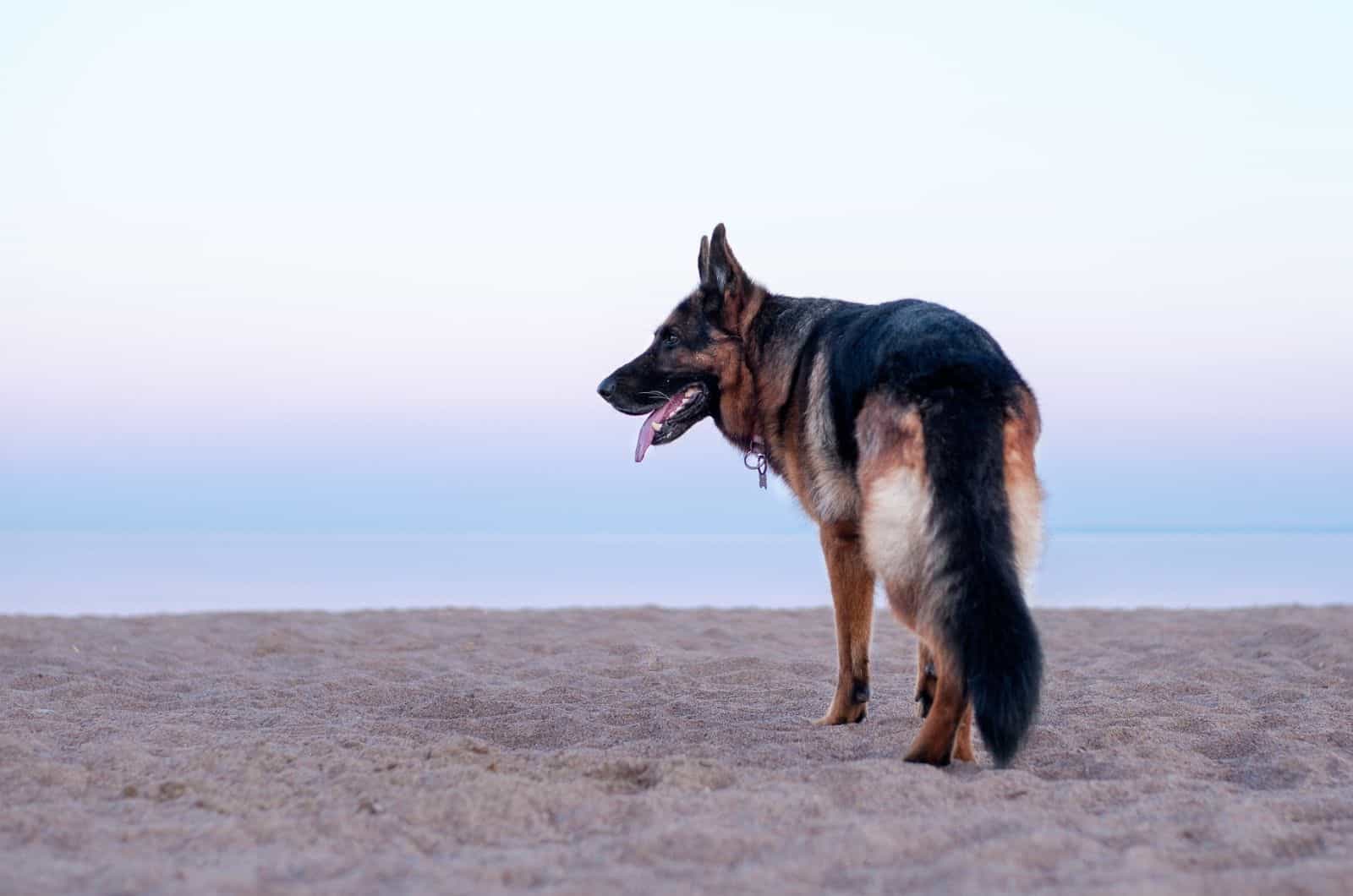Get ready to wag your tail off, because we’re diving into the wag-nificent world of German Shepherd tail types!
From the classic “straight outta the breed standard” tail, to the playful and quirky “curled up”, we’re going to show you all types of tails that these pooches can proudly show-off.
So grab a treat, and get ready to learn all about the tail-entertainment that German Shepherds can provide!
German Shepherd Tail Types
Are you ready to know to recognize a full-blooded (purebred) German Shepherd? Just look at their tails!
A tail that’s in proportion to the rest of their body is a sure sign of a purebred GSD puppy.
But, if the tail looks a little wonky, it might mean they’re a little mix-bred or have a health issue.
So, keep an eye out for tails that are just right!
1. Natural Tail
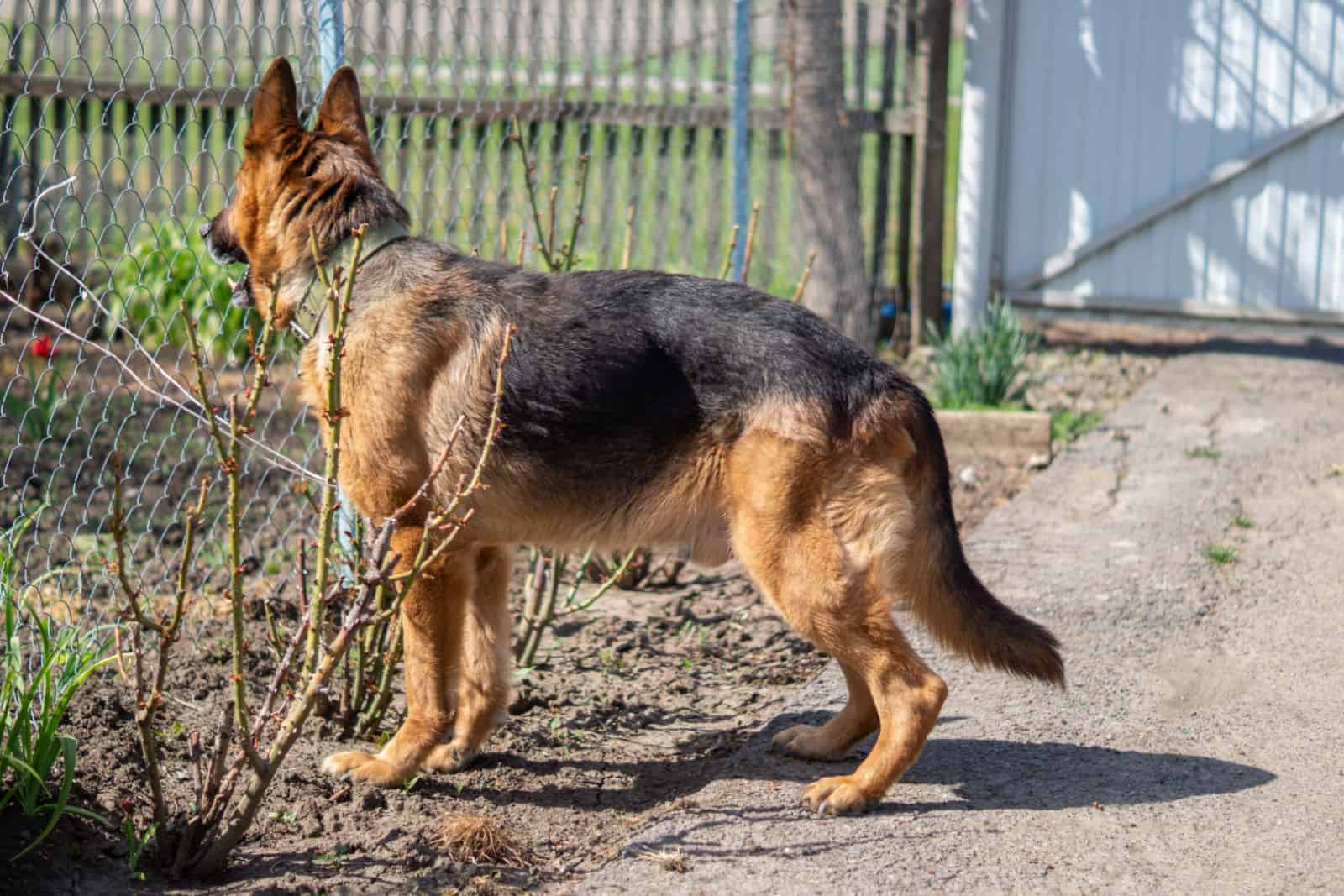
Let’s start with a natural type of tail which is long and thick, reaching all the way to the dog’s hock joint. The natural tail is well-muscled and has a thick base (croup). It typically hangs down when the dog is relaxed.
This type of GSD tail is set high and carried in a slight curve that is pointed upward, but does not go over the back (like in Huskies). This slight curve often resembles a saber, which dog owners often call “saber tails”.
You see, a natural tail is an important feature of this dog breed and is highly valued by breeders and dog show judges.
We can see this type of tail in both German Shepherds and Dutch Shepherds.
2. Bushy Tail
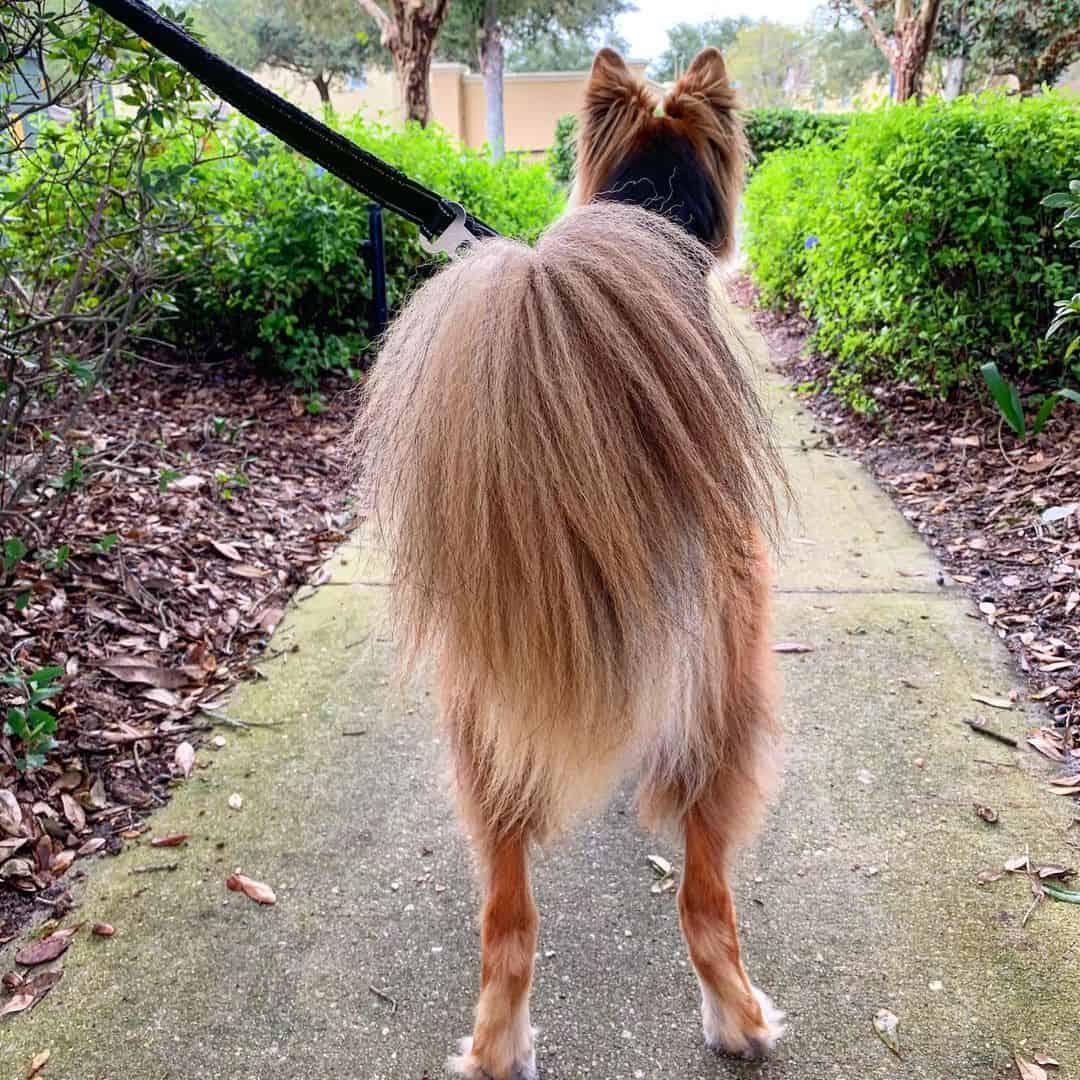
A bushy tail for German Shepherd puppies is not a term that is widely used in the AKC breed standards, but many people would describe their natural tail as “bushy”.
This type of tail can indicate that the dog’s tail is longer than standard and has a lot of hair on it, but it is not a desirable trait in a German Shepherd as per breed standard. Your German Shepherd may be long-haired if he inherits this type of tail!
If you think your GSD has problems because his tail is bushy, don’t worry! A bushy tail is not typically associated with any health issues. Additionally, it is not considered a fault or disqualifying trait in dog shows!
3. Sickle Tail
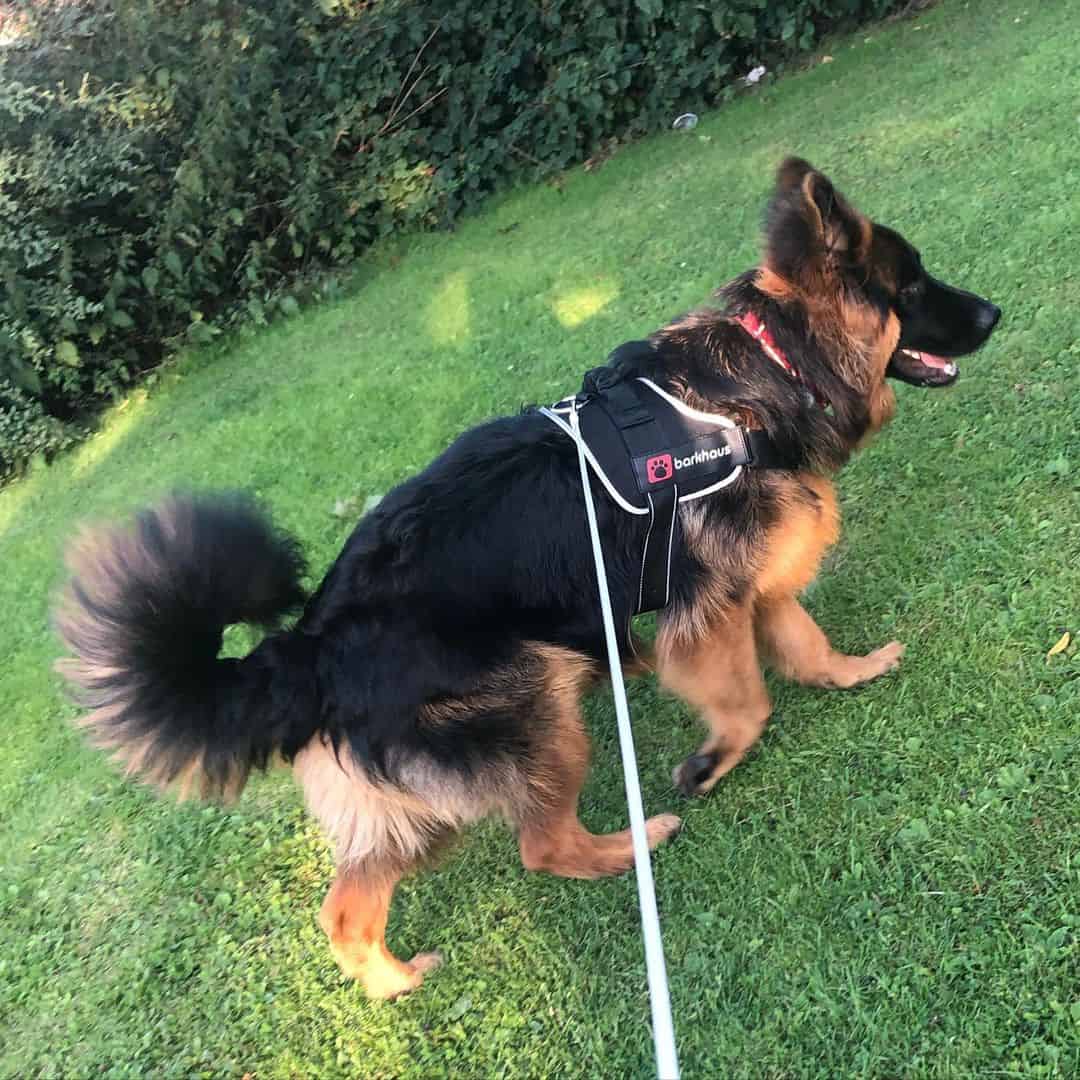
A sickle tail is a genetic fluke that’s not often seen in purebred German Shepherds, but it can happen! It can be passed down from mom and dad or just randomly pop up during puppyhood. This type of tail is commonly seen in many German Shepherd mixes.
Due to the fact Spitz type dogs are known for inheriting this type of tail, a GSD mixed with a Husky, or a Samoyed GSD mix is most likely to have a sickle tail.
With all that in mind, puppies with sickle tails are not allowed to participate in dog shows as they are not purebred dogs.
4. Straight Tail
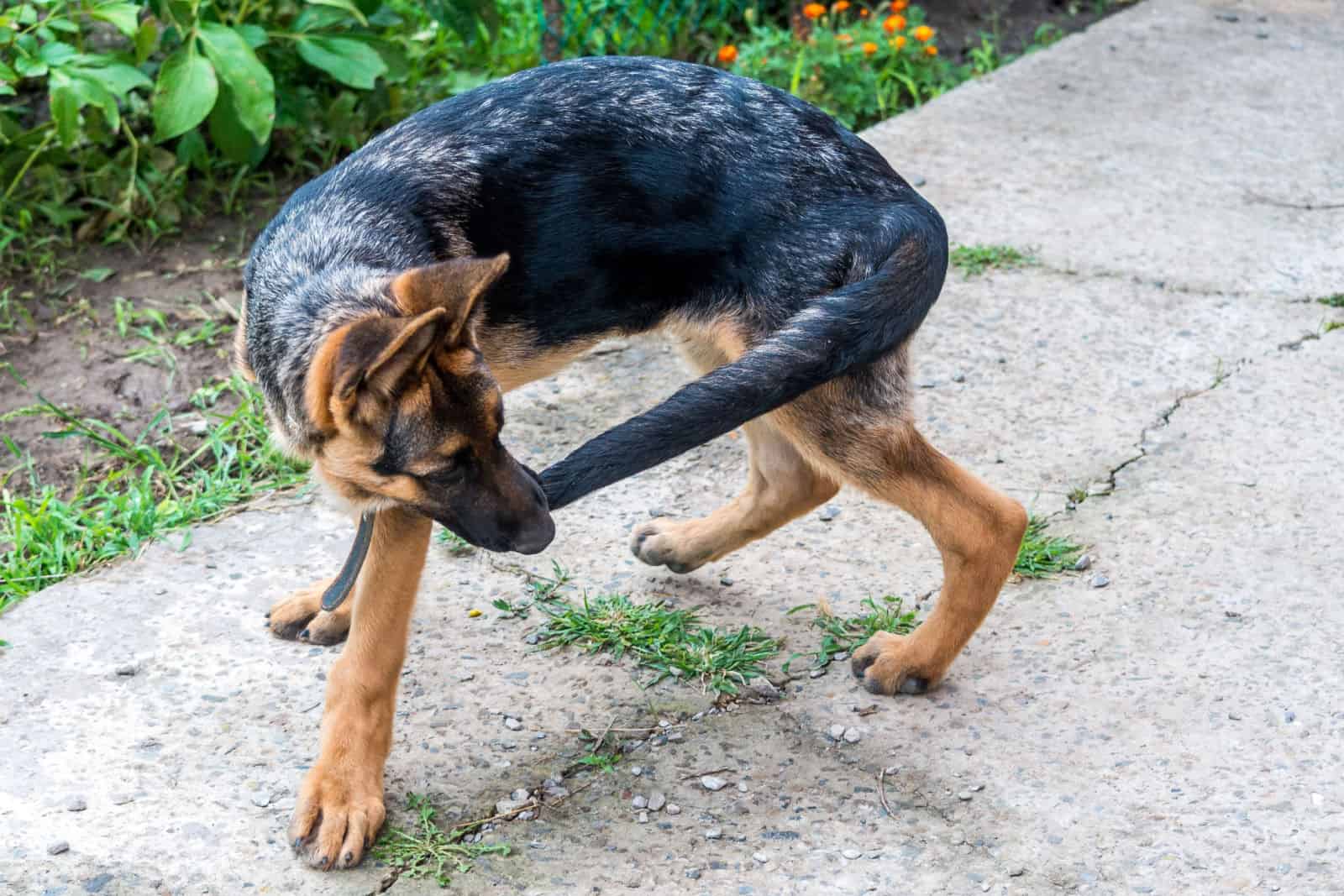
A straight tail in German Shepherds is a tail that is not as thick as a natural tail and does not curve at the end — it is completely straight. Doesn’t sound like a “normal” type of tail of this dog breed, right? Well, it is not an unhealthy tail, it just indicates that there may be other breeds in the mix.
For example, a Belgian Malinois German Shepherd mix is most likely to inherit a straight tail that is on the thinner side. The straight tail is set high, but it does not curve as a natural tail does.
However, you should be aware that this tail type is considered a fault or a disqualifying trait for dog shows in most countries, as it differs a lot from the breed standard’s natural tail.
Before determining that your dog has a straight tail, make sure to observe it when it’s in a relaxed state to have a better understanding of its tail type. When your dog is excited or alert, he holds his tail straight out and you may notice a slight curve at the tail end.
5. Docked Tail
Ever heard of a German Shepherd with a docked tail? Neither have I!
Even though your GSD was bred to be a working dog, tail docking is a no-no. This procedure deviates from the official breed standards and it is banned in some states.
While GSD tail docking is not as common as Doberman tail docking, some breeders actually do this. And trust me, those breeders are not reliable nor reputable.
However, a docked tail in adult dogs may indicate that they have been through tail injuries or infections.
Why Do Some German Shepherds Have Curly Tails?
Does a German Shepherd’s tail curl while the dog is growing, or is he born with this type of tail?
It is not unusual to see German Shepherds with completely curly tails, which can be caused by a genetic mutation, which can be a sign that the GSD is a hybrid dog.
However, it can also be caused by injury, infection or malformation, but it’s important to note that in most cases it’s perfectly normal.
According to AKC, GSDs with curly tails are not allowed to participate in dog shows.
It’s important to note that a slight curve of the tail is normal for this dog breed, and while a completely curly tail may not conform to the breed standards, it does not mean that your GSD is not purebred.
German Shepherd Tail Positions
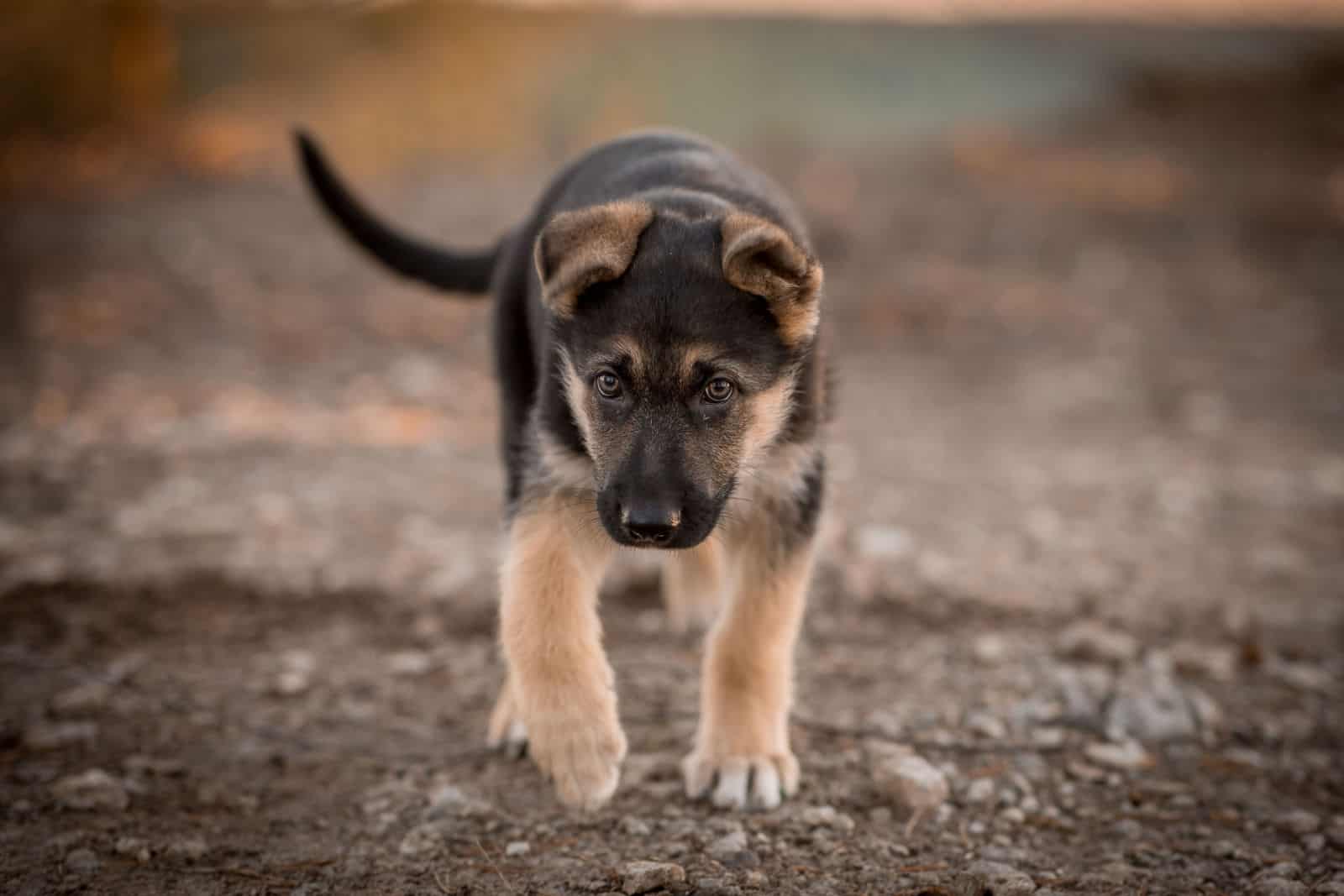
There are plenty of tail positions that can mean a lot and we may not understand them all. But, they can be a great indicator of a German Shepherd dog’s mood and emotions.
So, what do German Shepherds’ tail positions mean?
1. Wagging Tail
A wagging tail in a German Shepherd can indicate that the dog is happy and friendly. It can indicate that the dog is excited, playful, or eager to interact with people or other dogs, especially if it’s his first time meeting new friends!
However, it’s important to note that tail wagging doesn’t always mean a dog is friendly and happy.
Tail wagging can also be a sign of GSD anxiety or aggression, depending on the speed and direction of the wag.
2. Stiff Tail
This specific GSD tail position can indicate his level of alertness and intent. A stiff tail can be tricky as it can show dominance, signs of fear or anxiety, and confidence.
These dogs are considered as an aggressive breed, so it is important to keep an eye out on this tail position and the dog’s body language which includes the German Shepherd ear positions, posture and intense stare.
3. Tucked Tail
A tucked tail can be a sign that the German Shepherd dog is feeling scared, threatened, or that it is trying to make himself appear smaller and less threatening.
It is a common sign of submissive behavior which can lead to German Shepherd aggression.
The tucked tail can also mean that your dog is feeling pain or discomfort, especially if it is followed by GSD whining, panting, or limping.
5 Common German Shepherd Tail Problems

GSDs are known for several tail problems — from the “I broke my tail chasing my tail” injury, to the “I can’t stop wagging my tail” obsession.
So, grab your first aid kit because we’re exploring the different tail troubles that these majestic pups can face.
1. Anal Furunculosis
Is your dog scooting around the house? Perhaps you’ve noticed that your German Shepherd is itchy or licking his butt a lot, but doesn’t have fleas?
He may be suffering from anal furunculosis, a common problem in this dog breed.
While the exact cause is not known, this condition causes painful abscesses around the dog’s anus which leads to:
- Tail chasing and biting
- Crying during potty time
- Loss of appetite
- Anal bleeding
2. Limber Tail Syndrome
This tail problem is commonly known as “cold tail” or “limp tail”. Although German Shepherds tolerate cold very well, their tails may be more sensitive than the rest of their body.
Limber tail syndrome occurs when your dog had his tail in cold water for a long time or if he was exposed to extensive dog training and exercise.
3. Hair Loss (Alopecia)
Hair loss on a GSD’s tail can be caused by hormonal disbalance, allergies, parasites, bacterial or fungal infections, and so on.
Tail chasing that is caused by stress and anxiety can also lead to hair loss around the base and along the dog’s tail.
4. Skin Infection
Fungal and bacterial infections, as well as parasitic infestations can cause skin infection that makes your GSD’s tail look like a complete mess!
From tail lumps, bald spots, to painful abscesses, dog skin infections are not to be taken lightly. Your German Shepherd may develop a stud tail as a result of skin disease or infection.
5. Happy Tail Syndrome
Believe me, there is nothing happy about the happy tail syndrome in German Shepherds.
This is a type of injury that occurs when your GSD wags his thick and heavy tail excessively while hitting it against a hard surface. Such injury causes the tail to bleed, swell, or even break!
A Final Woof On German Shepherd Tail Types
We hope you’ve enjoyed this tail-tastic journey, and now have a better understanding of the different German Shepherd tail types that these fluffy furballs can have!
Remember, whether it’s straight, curled or bushy, one thing is for sure — German Shepherds tails are always wag-nificent and worthy of attention!
So, let them wag away, folks!
